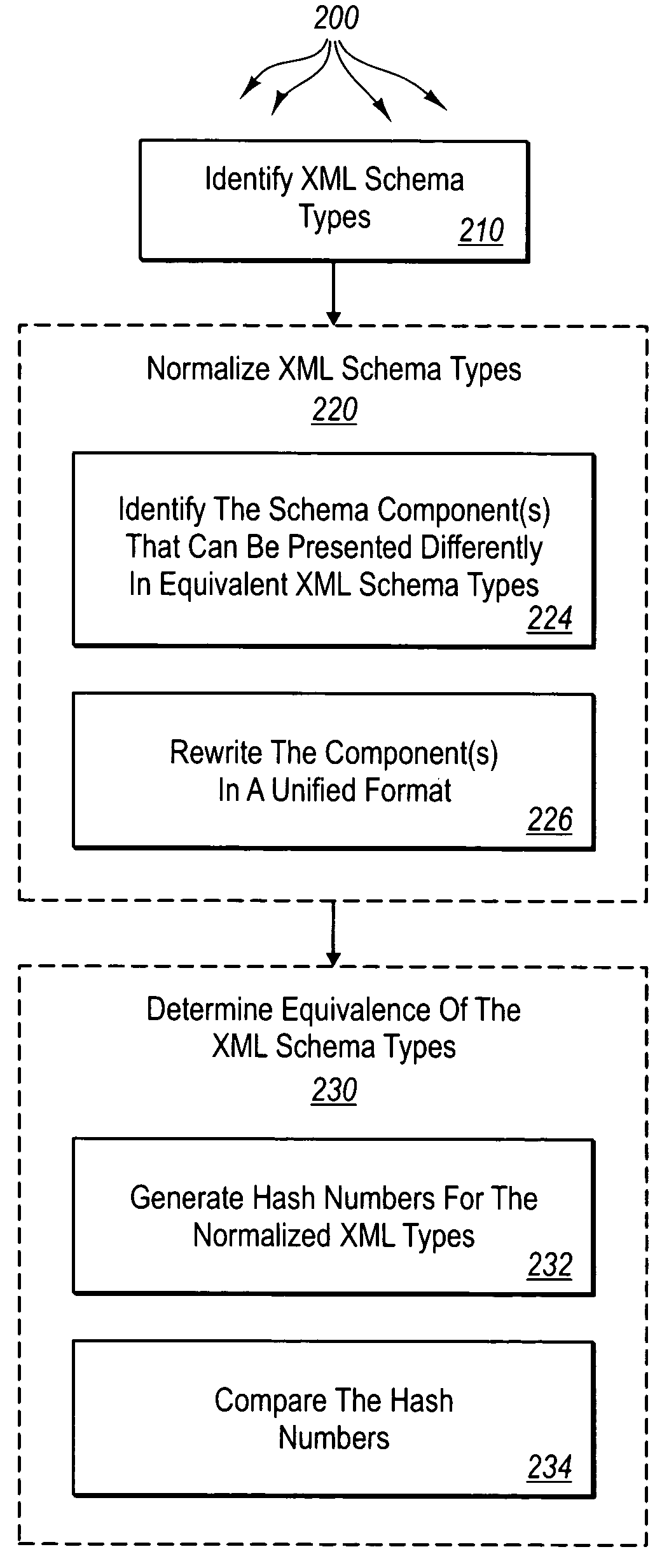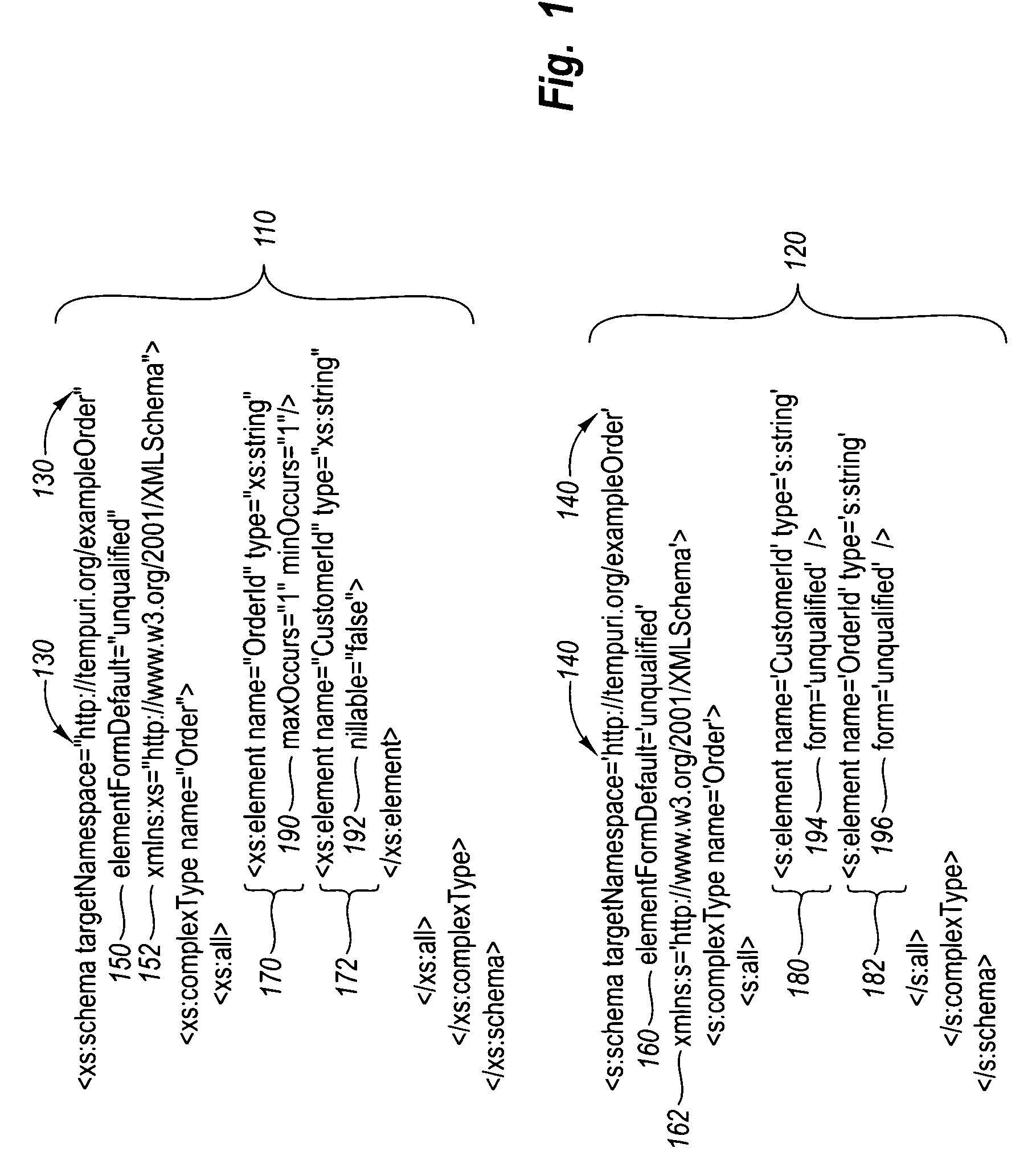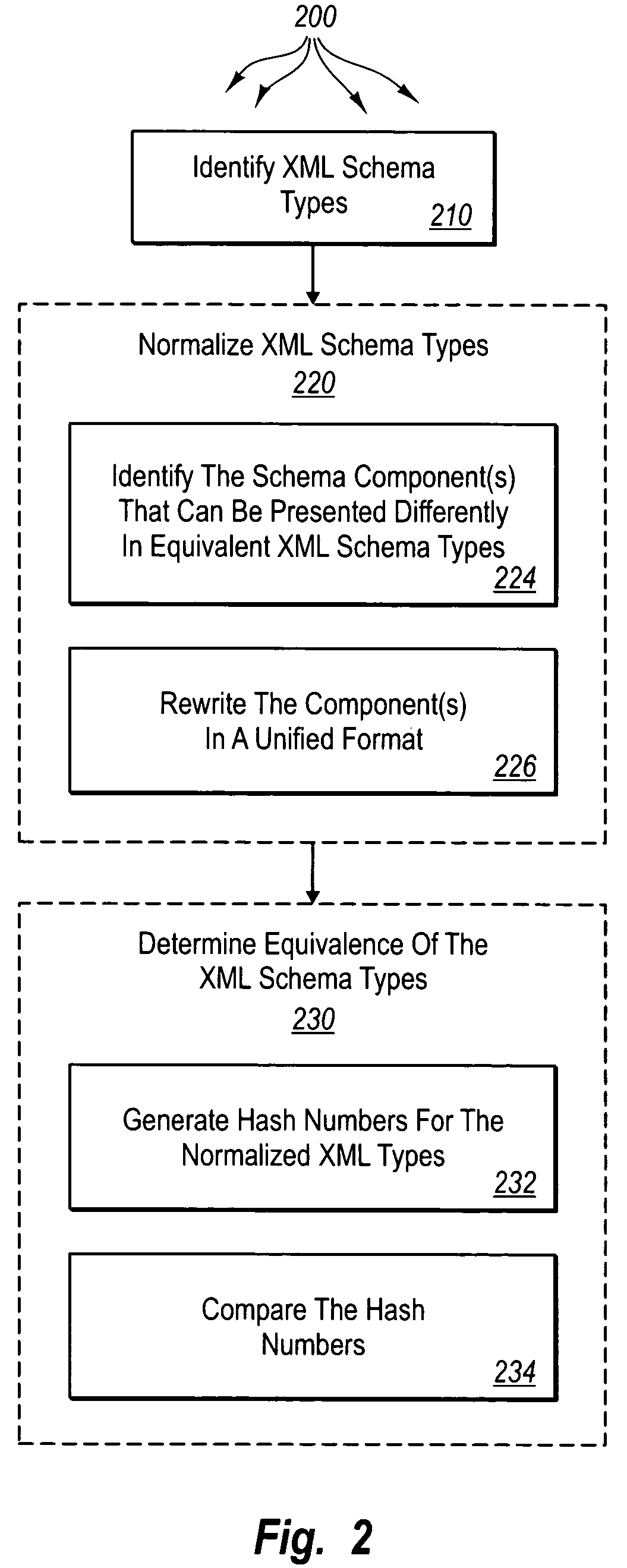Determining XML schema type equivalence
a schema type and xml technology, applied in the field of determining xml schema type equivalence, can solve problems such as programs failing, incompatibility or failure to run properly, and applications utilizing redundant classes to fail
- Summary
- Abstract
- Description
- Claims
- Application Information
AI Technical Summary
Benefits of technology
Problems solved by technology
Method used
Image
Examples
Embodiment Construction
[0027]The present invention extends to methods, systems and computer program products for determining equivalence of XML schema types.
[0028]Certain definitions will now be provided to assist in the interpretation of the invention, as described and claimed herein.
[0029]The term “XML schema,” as defined herein, should be broadly construed to include any XML structure configured to define the building blocks of an XML document and that includes at least one schema type. Accordingly, although the present application includes references and claims directed specifically to W3C XML Schemas, it will be appreciated that the scope of the invention extends even more broadly to any data structure that can be used to define XML types and data.
[0030]The term “schema type,” as defined herein, should be broadly construed to include the portion of an XML schema that is used to create a class for subsequent application to XML data. Schema types, which are well-known to those of skill in the art can i...
PUM
 Login to View More
Login to View More Abstract
Description
Claims
Application Information
 Login to View More
Login to View More - R&D
- Intellectual Property
- Life Sciences
- Materials
- Tech Scout
- Unparalleled Data Quality
- Higher Quality Content
- 60% Fewer Hallucinations
Browse by: Latest US Patents, China's latest patents, Technical Efficacy Thesaurus, Application Domain, Technology Topic, Popular Technical Reports.
© 2025 PatSnap. All rights reserved.Legal|Privacy policy|Modern Slavery Act Transparency Statement|Sitemap|About US| Contact US: help@patsnap.com



